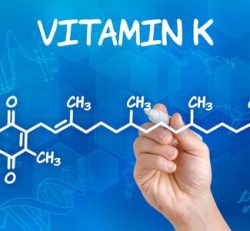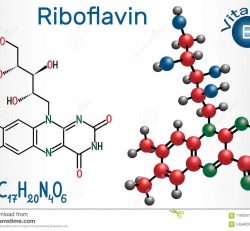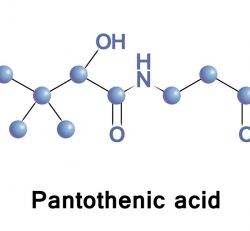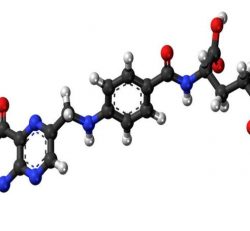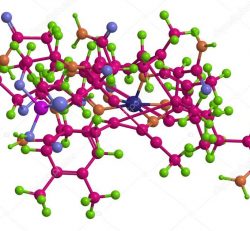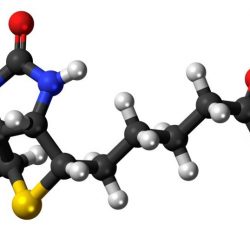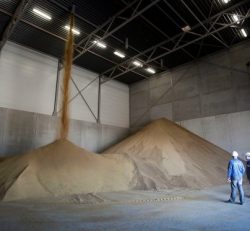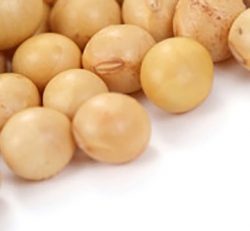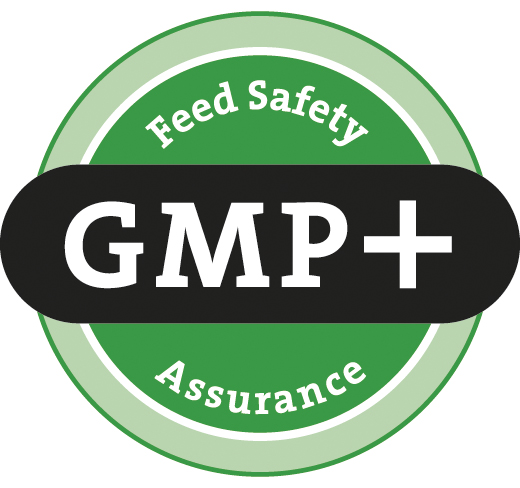A TROPICAL VIEW ON HEAT STRESS IN SOWS
‘Heat stress’ is a topic that has been getting increasing amounts of attention – if not for the growing swine business in tropical countries, then because of the climate change. Still, only a limited amount of research institutes and universities around the globe have teams focusing on the impact of heat stress on swine production. The Federal University of Minas Gerais, Brazil, is one of them, and probably one of the few actually located inside a tropical zone.
In fact, Brazil is home to various tropical climates, hence different types of heat stress occur depending on the location in the country, varying from 26ºC to a whopping 40ºC. The majority of the pig population is concentrated in the south east and south region of Brazil. There, pigs often suffer because of the extreme variation in temperature, especially during the summer – from hot and humid during the day, to very cold during the night.
Prof Bruno Silva, attached to the university, has been specialising in the topics of swine nutrition and environmental adaptation since he joined the university in 2012. Particularly for lactating sows he knows like no other what heat stress can do – and finding solutions to that is what keeps him going.

Pig Progress: Is there enough attention for sows in relation to heat stress?
Prof Bruno Silva: “I always ask this to farmers and students: what is more important to you, the product or the factory? In 90% of the cases they are focused only on the product, which are the piglets. They forget that if the factory is not working properly, they can’t deliver a good product. So we really have to focus on the sow to get the best out of the animal, to express its potential for piglets too.”
Are you on your own with that opinion in Brazil?
“I think things are changing. People are aware that we have to do something. One of the main problems related to pigs is that the animal tolerates mistakes. One can commit mistakes with the pig and it will still go on producing. Below its potential, but producing. It’s not punishing producers that much.”
Like poultry?
“Yes. If one makes a mistake with poultry, they drop dead. But sows, well you’ll get a 10% mortality, but they are still producing.”
How much is there to be gained, if everything is correct for the sow?
“If we are talking about basic improvements, in my experience, 23-25% in terms of sow output. So we are talking about sows that would produce piglets around 1 kg or 1.2 kg heavier at 23 days of age.”
What is typical for heat stress in southern Brazil?
“Sometimes you have to deal with two climates in the same day; during the day it is hot and during the night it is cool. Thermal variation or amplitude is what takes its toll on animals; it is much more aggressive to the animal than a constant heat stress, both physiologically and metabolically. To a constant heat stress, an animal can adapt and it will keep producing at a lower level. But in situations with thermal variation, this is much more complicated, leading to higher mortalities in sows.”
How do sows normally lose their heat?
“Basically they are dependent on so-called ‘sensitive heat loss’, i.e. conduction, radiation or convection. The most effective one is by conduction – so if the pig enters in contact with a surface that has a different temperature. This environmental gradient will allow a normal heat flow from the pig’s body to the environment. Its second option would be using the respiratory frequency as its main mechanism to dissipate heat.”
Panting is not a permanent solution.
“The problem with that is that it generates heat too. So a higher activation of the lung functioning – the lungs are muscles in the end – increase endogenous heat production. This means that if the animal is maintained under heat stress conditions for a long period or when the temperature rises even more, there’s a risk that the animal will overheat and this will bring the animal to death via hypothermia. It is very common in Brazil. Lactating sows of some genetic lines can have up to 15% mortality during Brazilian summers due to heat stress conditions.”
Which of your focus areas is more important for sows to relieve heat stress – nutrition or environmental adaptation?
“Changing the environment is much more effective. Pigs have a very limited thermoregulatory system. In other words, they have a hard time losing heat to the environment. Nutrition comes as an alternative to alleviate the negative impacts of heat stress on pigs.”
|
PROFILE  Prof Bruno Silva, speaking at a swine nutrition event in Vietnam. |
Bruno Silva, PhD, aged 38, has been professor and researcher in swine nutrition and environmental adaptation at the Universidade Federal de Minas Gerais (UFMG/ICA), Brazil since December 2012. Prior to that, he was a researcher and a nutritionist for – then called – Topigs, as from 2008, giving support to the Americas as well as Spain and Portugal. He did his undergraduate in Animal Science in Brazil at the Universidade Federal de Viçosa, in Minas Gerais, where he also obtained his PhD, in cooperation with French National Institute for Agricultural Research (INRA), which also has a research centre on environmental adaptation in the Caribbean island of Guadeloupe. |
What kind of environmental solutions are you thinking of?
“In my opinion, localised cooling systems are more effective than changing the macro-climate of the barn. After all, cooling down the whole barn, using evaporative cooling systems, could create a stressful situation for the piglets. Floor cooling systems in this sense are a good example – they give direct contact and are the most effective one; others include snout cooling systems and drip loss cooling systems.
“One other very interesting solution is cooling the drinking water. Only one research has been done in the past with this, for sows, and it showed to be very effective. We recently developed a drinking water cooling system which we will start evaluating this summer in Brazil. Initial pilot studies indicated an improvement of 700 g of feed intake per day per sow – a 20% increase in feed intake. It shows there is a good opportunity in systems like this under heat stress conditions.”
How about nutritional solutions?
“Our research indicates that under heat stress animals need a different profile of vitamins, minerals and amino acids. Amino acids like arginine, leucine and threonine are highly relevant for maintaining the integrity of the intestinal tract.
“In addition, when applying nutritional strategies one has to consider the ‘thermal effect of feed’. This includes reducing fibres and crude proteins, because they generate a lot of heat. So all in all, by reducing the crude protein content of diets and by supplementing industrial amino acids it is possible to yield a better performance.”
“We also could work out strategies to improve digestibility. During heat stress sows will reduce milk production. One of the things we looked at is whether we can change the milk composition. So piglets might get less milk, but if it is more concentrated, this can help them keep up performance. In the past three years, we have tested to improve the composition of the milk under heat stress conditions. We have done trials with live yeast and probiotics (S.c. boulardii CNCM I-1079), and we got positive feedback, as we changed the fatty acid profile of the milk. That was reflected in heavier piglets under heat stress conditions.”
During gestation, does it matter whether sows are kept in crates or in group housing?
“When you give sows more freedom, you give them the option to try to search for comfort zones within the barn. Under heat stress conditions, a sow will search for fresh places. In a loose gestating system, sows will try to find a place that is coolest place in the barn. In a cage she doesn’t have too many options. The only thing she can do is change sides.
“Later, in a farrowing crate, the heat may bother a sow so much that it becomes agitated. It even generates more heat, of frustration! In addition, it normally turns so often, so you have quite a high rate of crushing in this situation.
“With older piglets, what we see is that sows even intentionally kill piglets. With her nose she crushes them against the cage or feeder until they die. In my opinion, that is a manifestation of the lack of welfare due to the heat stress.”
Why would a sow do that?
“It could be related to the fact that the piglets were born under heat stress conditions. If a sow reduces milk production, the piglets are always hungry. So they go after her more times to try to stimulate her more. I think this irritates her, because the piglets are biting her teats.”
“That is why it’s highly relevant for sows under heat stress to be using creep feeding. As the sow produces less milk, the piglets start eating the creep feed much earlier and this has a very positive impact on the outcome at weaning.”
What future research have you planned?
“We still have a lot to investigate on how the feeding pattern of the animal changes with thermal amplitude, so that it can help us using different feeding strategies at different moments of the day for example.
“We are currently running two trials now at the university, where we are looking at using different types of feed flavours for piglets and the effect of that on piglet post-weaning performance, we call this sensory imprinting. The idea is to see if, depending on the type of feed flavour, you can get a faster start of these piglets post-weaning, so less stress gets them quickly back on eating and drinking.”
Last question: Shouldn’t we just start all over again and breed pigs that are suitable for tropical climates like Brazil?
“Brazil is one of the biggest pig producers in the world, therefore genetics should be more adapted to local conditions. For instance, Topigs Norsvin in fact has included heat stress elements in their lines – allowing more robustness which allows a better performance under tropical and subtropical regions. Still, there is potential for more gains and genetic companies should continuously invest in improving the capability of these animals to adapt, especially because pig production is increasing in a very strong pace in these regions.
“The focus should also be on the piggeries, for example in finishers, especially because markets are shifting to heavier pigs. I see in the US market they are going up to a 130-140 kg and in Brazil to 125-130 kg, with lean genotypes producing 20% more heat. They will radiate that heat to their neighbours. If pen density is increased, this actually worsens the situation.”
Thanks to Lallemand Animal Nutrition for making this interview possible.
Vincent ter Beek
Editor of Pig Progress/ Topic: Pigs around the world
Source: www.pigprogress.net


